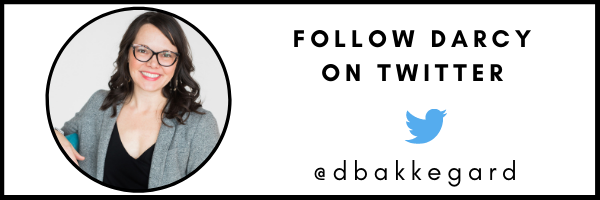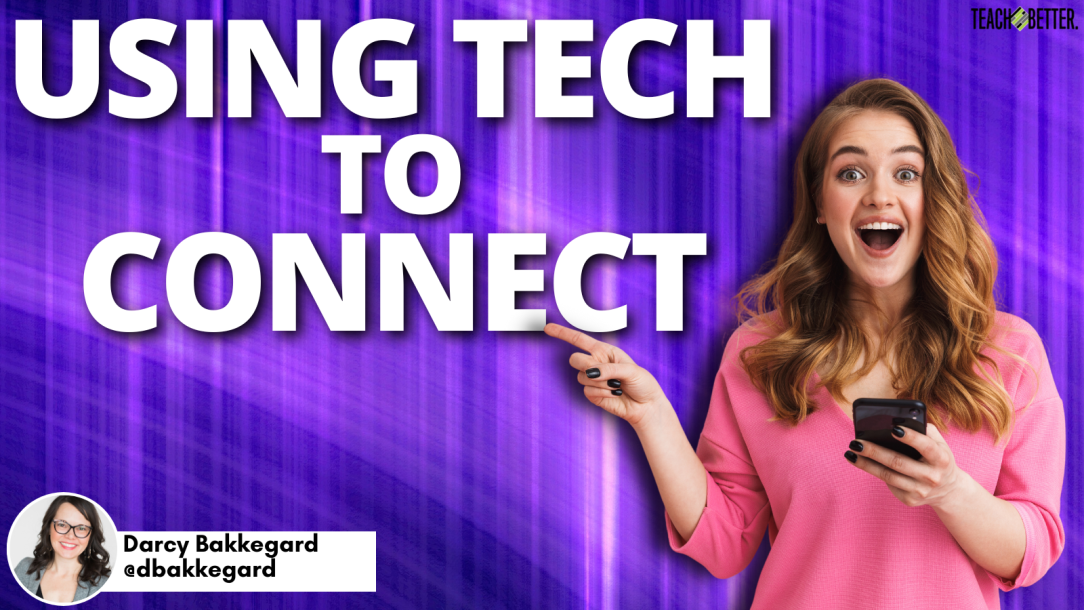TL;DR:
- It’s so great to be together in person with students.
- How can we use tech to support in-person learning?
- Consider using audio journals.
- Turn research papers into podcasts!
Back to School
It’s great to be back to school in person. There’s magic in a classroom, an excitement that grows when students and teachers are in the same place at the same time. In all the joy of being in-person, don’t forget about the unique ability tech has to help us connect. After all, just being in a room together is not enough to truly and fully connect with students. Strategic use of tech tools will help you hear more from your students so you—and they—can better connect.
Tech Tools to Connect: Flip Journals to HEAR Students
Create audio journals with students. Questions can be related to the content, functioning as a weekly exit ticket to summarize key concepts. Prompts can be topical, changing with the needs of your content, students, and the state of the world. Grade them for completion, say it’s practice for public speaking, and tell them it’s about hearing what they think, but ultimately it’s an opportunity to build connections with students: let them talk and then listen.
Tech Tools to Connect: Video Journal How-To
Each week you provide a series of prompts and students have to answer one, two or three, as instructed. Include:
- A prompt about this week’s content. (Prompt changes weekly.)
- A prompt about a current event/happening. This could include an article or TikTok link, photo/image/gif/emoji or any other media to spark engagement and help you connect. (Prompt changes weekly.)
- What’s brought you JOY this week? What is on your mind? (Prompt doesn’t change; it’s always an option.)
Set your minimum and/or maximum length and have students answer in a private response. Then post a video response back to them. Ask questions, clarify content, comment—generally talk to them. The next week, they can choose to continue the conversation (by answering your questions) OR they can answer a new prompt. Either way, their 2nd post is done as a response to your post. So each student will have one long thread of videos: Them, you, them, you.
You can do this same task as a historical figure, literary character, science concept, body part, planet, sport, event…really, anything can become a character. Start with personal journals and build those connections with students.
Adobe Creative Cloud Express Podcasts to Empower Learners
Formerly knowns as Adobe Spark, Creative Cloud includes three go-to resources to create graphic designs, websites, and videos. Use all three tools to create personalized podcasts. Students create a podcast using the video tool, design graphics, and a show logo with the graphics tool, then post all their resources on a website.
Really, any research paper-type task could become a podcast and website instead. Click To TweetTech Tools to Connect: Podcast Ideas
- An interview with someone in that profession. Students practice email etiquette to schedule the interview and send the interviewee questions.
- Record the interview via any video conferencing tool.
- Research the career: read one trade article from that profession, compile a list of key traits ideal for success, and outline training requirements and career projections.
- Design a logo for the podcast and website.
- Personal reflection: my expectations/why I’m thinking about this career; reaction to what I’ve learned so far; evaluation of this career and why it is/isn’t a good fit for me; my next steps.
- Compile all of the above on a Creative Cloud website.
- Bonus activity: Send a hand-written note (on school stationery/cards if available) to practice writing thank yous and addressing envelopes (a lot of my students didn’t know how to do that. They were 17-18.). My school agreed to pay the postage.
Really, any research paper-type task could become a podcast and website instead. Post history or science projects; conduct mock interviews with literary characters, historical figures, or famous professionals; track personal growth through the school year. But the personal reflection piece is at the heart of getting to know your students via a “traditional” assignment.
[scroll down to keep reading]
Storymap the Future (or Past) to Connect
There are tons of presentation tools out there. Storymap adds a nice geographic layer. Automatically link to anywhere on the map then add videos, text, and photos. This simple FREE tool will help you connect with students, help them connect with themselves, or help your community connect to your learners.
Map Your Future
Students create a map for their future. Students create a “Start Here” (meaning now) post and add 5+ “stops on the map—stops working up to graduation, work, college, or independent living. Stops include:
- A list of skills needed to reach that destination
- A graphic/image to convey the goal connected to that destination
- Audio or video speaking as themselves at that age answering the following questions:
- What do you want life to FEEL like?
- What will bring you JOY?
- How will you put JOY out into the world?
- What IMPACT do you want to make (for others, for the world)?
These three tools will flex and adapt with you for almost any project. Not confident with a tool? Empower a student or two to learn the tool and be the ambassadors for the class. I always learn more from my students than I do on my own. And, isn’t that the whole point of building connections? Happy teching!
About Darcy Bakkegard
Darcy Bakkegard is an English/Theatre teacher who got tired of traditional sit-n-get PD and now creates the type of PD she always wanted with The Educators’ Lab. With 10 years of experience teaching English and Theatre, Darcy specializes in interactive strategies for the classroom, meaningful tech integration, and building relationships with students. Darcy is an ISTE Certified Educator, an experienced international presenter, and empowerer of teachers. She co-authored The Startup Teacher Playbook to help teachers take back their professional development and rekindle their spark for teaching. 


